 06-23-2014, 11:33 PM
06-23-2014, 11:33 PM
|
#131 (permalink)
|
|
Changfa diesel + Suzuki
Join Date: Jul 2012
Location: Northern, NY
Posts: 527
Centurion - '74 FIAT X1/9 Centurion Full Race DNA Last 3: 143.5 mpg (US)
Thanks: 160
Thanked 463 Times in 235 Posts
|
Quote:
Originally Posted by sendler

I add mass to my motorcycle when in competition.
|
That's interesting sendler. Sometimes trying different things can yield good results - even if it may fly in the face of conventional wisdom. 
~CrazyJerry
|
|
|

|
 Today Today
|
|
|
|
 Other popular topics in this forum...
Other popular topics in this forum...
|
|
|
|
 06-23-2014, 11:45 PM
06-23-2014, 11:45 PM
|
#132 (permalink)
|
|
Changfa diesel + Suzuki
Join Date: Jul 2012
Location: Northern, NY
Posts: 527
Centurion - '74 FIAT X1/9 Centurion Full Race DNA Last 3: 143.5 mpg (US)
Thanks: 160
Thanked 463 Times in 235 Posts
|
Details - Exhibit 2: Wheel Bearings, U-Joints, transmission, differential. and brakes.
-
Most newer cars don't have the "adjustability" of the older ones. They are generally less maintenance and when the part goes bad, you toss it instead of rebuilding it.
-
The front wheel bearings on Centurion are the standard tapered roller design. Prior to the Green Grand Prix they were repacked with moly grease and adjusted so they spun easily! The rear wheel bearings are pressed in, so they were greased and checked for ease of rotation - and that's where the fun began! There was some resistance when spinning the rear wheels so a little investigation by process of elimination took place.
-
With an independent rear suspension like Centurion's, it's not too hard to disconnect each rear axle and the driveshaft. In doing so, it's easy to test each side independently from the differential and transmission to narrow down any issues.
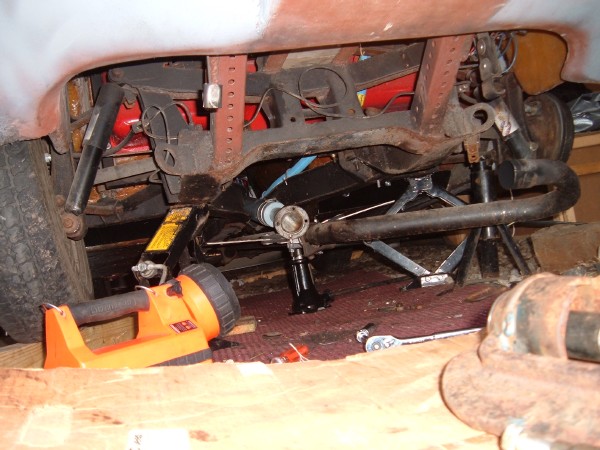
.
.
The bulk of the resistance was ultimately coming from the axle u-joints. This was really evident when simulating the actual ride height - which for the Green Grand Prix made Centurion look like it had a sagging rear.
-
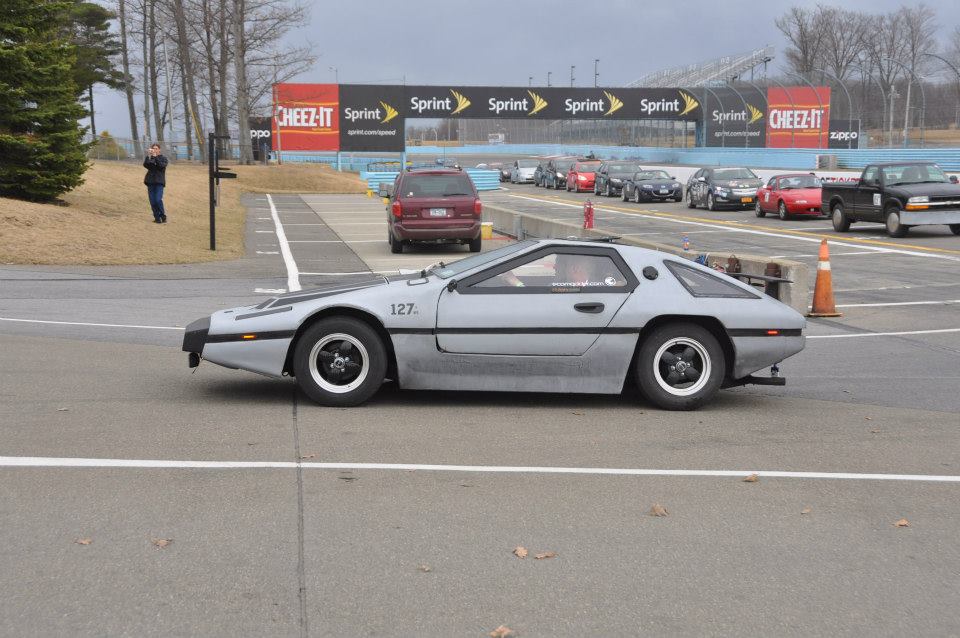
.
.
This sag was an intentional lowering via the rear buggy spring.
-
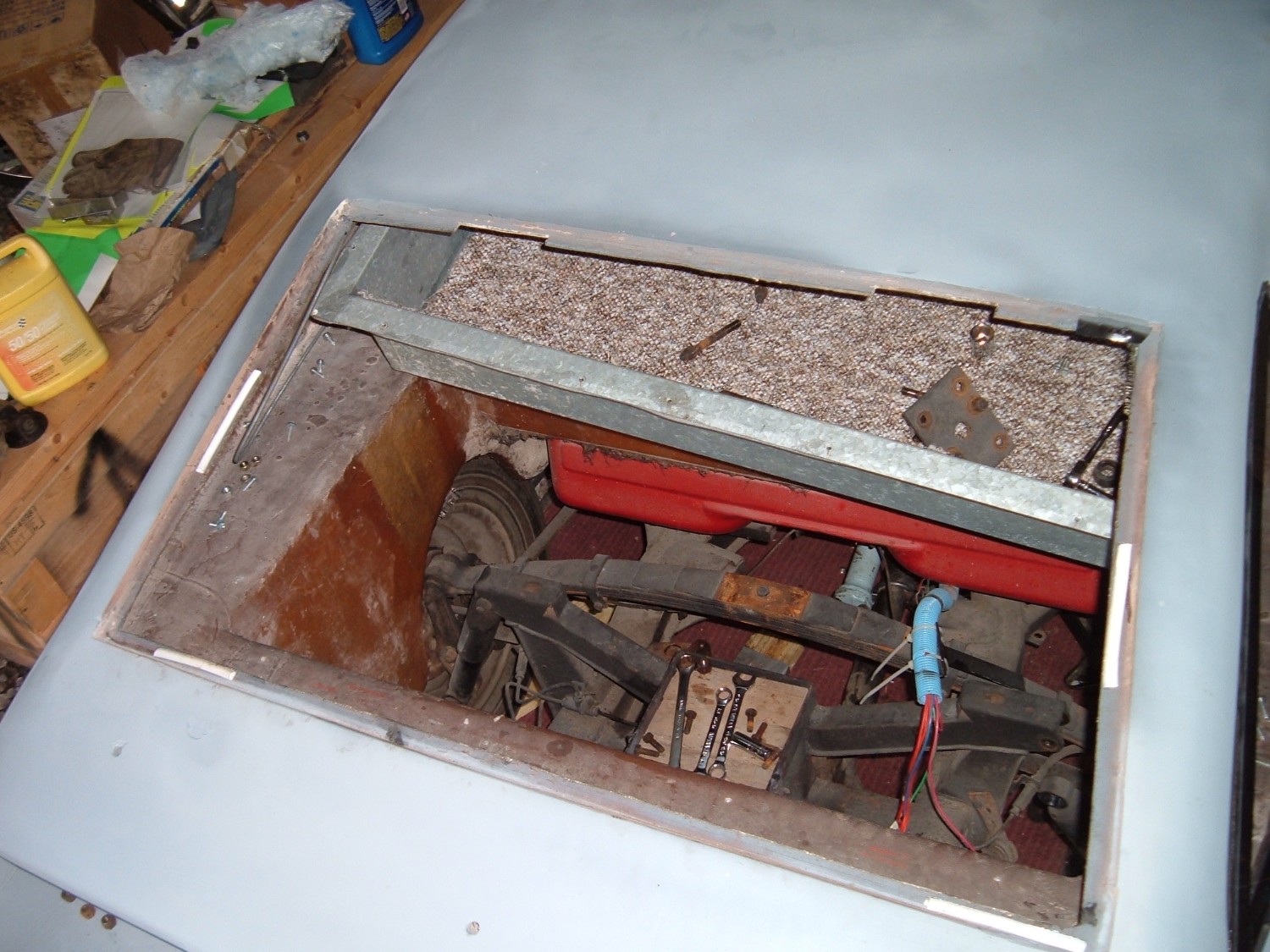
.
.
The lowering was a preventive measure against a chance of the rear "jacking" on the track.
-

-
-
The u-joints were correctly installed "tight" with no play at the caps, but the resistance felt by them as they would speed up during their angular momentum (due to the negative camber by lowering the rear) was a bit too much for my liking. So, out came the u-joint adjuster (ball peen hammer) and the yolks got a little corrective slap. Not hard but time consuming, now everything felt good.... Well almost...
-
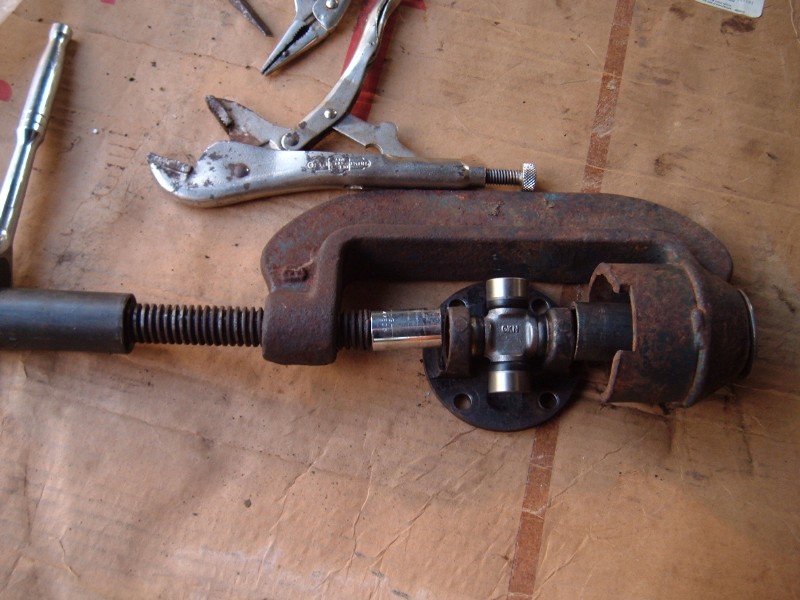
.
.
By hand, both the rear differential and the transmission turned like they had cold honey in them... And with snow still on the ground at the time that made sense. But if it were cold the morning of the Green Grand Prix Stage I fuel economy run, this simply would not do... So, after careful consideration (throwing all caution to the wind), both units were run at minimal levels and on automatic transmission fluid. At first this was against my better judgement, but they both turned so free-n-easy it was impossible to say no, plus time was running short and that's all I had in immediate stock on the shelf.. Without any apparent damage, both the tranny and differential performed: The trip down - Stage I on the track - And the trip home.
-
Centurion's front disc brakes are the stock 1966 Spitfire issue and they dragged a little too much as well.
-
After 3 million compression cycles with a clamp I decided the calipers were just fine and set my focus to the pads / pins. Using some small spring steel from who knows what, I made a couple of spring-type wedges to push the pads away from each other and free up the front rotors. What a difference a little drag makes!
-
The downside was there was a bit more travel in the pedal before the calipers were able to fill up and engage the pads to the rotors. Small price to pay though.
-
The rear brakes were another story. Being shoes-n-drums meant there was an adjuster someplace back there to make sure they would fully retract and not rub the drums. But even after adjusting, they still dragged a little so out came the file and the shoes got a little shave where the rear cylinders contact them. That took awhile but the piece of mind was worth it! And the list will go on.....
-
~CrazyJerry
Last edited by changzuki; 08-04-2018 at 11:17 PM..
Reason: Typos... I may need glasses.
|
|
|

|
 06-24-2014, 01:23 AM
06-24-2014, 01:23 AM
|
#133 (permalink)
|
|
diesel doer
Join Date: Oct 2013
Location: Gainesville, FL
Posts: 46
Thanks: 29
Thanked 6 Times in 6 Posts
|
Quote:
Originally Posted by Dauntless
If anyone familiar with the Miata frame as ideas, that'll certainly be of interest.
|
Two potential solutions are available. The Brits, having less Spitfires than we, have developed a replacement ladder frame for the Spitfire. To see it and it's dimensions for, of course, English Fords, do wannop.co.uk, then click on Technical and click on chassis. This frame could be built to accept a Triumph/Kubota drivetrain, Miata drivetrain, Corolla/Kubota drivetrain ala Kinetic Vehicles or it's outside framework could be used to strengthen the Miata PPF (power plant frame) with very little increase in weight. IMHO, any of these would be a fun way to go. |
|
|

|
|
The Following User Says Thank You to BobS For This Useful Post:
|
|
 06-24-2014, 07:14 AM
06-24-2014, 07:14 AM
|
#134 (permalink)
|
|
Master EcoModder
Join Date: May 2011
Location: Syracuse, NY USA
Posts: 2,935
Thanks: 326
Thanked 1,315 Times in 968 Posts
|
Quote:
Originally Posted by changzuki

That's interesting sendler. Sometimes trying different things can yield good results - even if it may fly in the face of conventional wisdom. 
~CrazyJerry |
It makes sense if you think about it. Added mass improves the effectiveness of Engine Off Coasting with Pulse and Glide. And really only hurts fuel economy if you touch the brakes. Which we almost never do in competition. The increased rolling resistance is negligible and if the mass is gained as the result of an aero mod, it will be a big net improvement. I read a lot of comments about expensive techniques to reduce the weight of a vehicle as a means of improving the FE such as changing the lead battery for a lithium. Complete waste of money. FE only cares about the mass of the vehicle when you step on the brakes. Or if you are scrubbing the tires through the bottom of turn one. |
|
|

|
 06-24-2014, 09:30 PM
06-24-2014, 09:30 PM
|
#135 (permalink)
|
|
Changfa diesel + Suzuki
Join Date: Jul 2012
Location: Northern, NY
Posts: 527
Centurion - '74 FIAT X1/9 Centurion Full Race DNA Last 3: 143.5 mpg (US)
Thanks: 160
Thanked 463 Times in 235 Posts
|
Quote:
Originally Posted by sendler

It makes sense if you think about it. Added mass improves the effectiveness of Engine Off Coasting with Pulse and Glide. And really only hurts fuel economy if you touch the brakes. Which we almost never do in competition. The increased rolling resistance is negligible and if the mass is gained as the result of an aero mod, it will be a big net improvement. I read a lot of comments about expensive techniques to reduce the weight of a vehicle as a means of improving the FE such as changing the lead battery for a lithium. Complete waste of money. FE only cares about the mass of the vehicle when you step on the brakes. Or if you are scrubbing the tires through the bottom of turn one.
|
sendler,
I hear what you are saying however, you will never see a triathlete weigh down a bike or its wheels. Every acceleration and uphill chews up watts - even more if there's more weight do deal with. When you actually have to pedal a bike over long distances, you learn real quick what takes more energy and what takes less energy. Bikes, cars, cycles, it's all about energy used whether expressed in watts, hp, whatever. And, the rule of thumb is you will never gain on a downhill what you will lose on an uphill. Lightweight is where it's at. If the weight was in the form of aerodynamics - such as fairings for example - the weight may then be an asset since aero is a big deal (and rightfully so, ecomodder seems to be all about aero.) If weight works in your particular case that is excellent. I wouldn't dream of weighting down the Centurion - or for that matter the Changzuki. In real world driving conditions, if I fairing'ed the Changzuki and kept it lighter than your weighted bike, our mpgs would be miles apart I do believe...
-
Just for laughs, take this to the extreme - your bike with 3 extra large riders dangling off it at the GGP, and a clone of your bike with just you... Now think of all the corners, uphills, downhills, other traffic, etc that are on that track... I know which one I'd take if I were looking for high mpg. Just my opinion though...
-
And lithium batteries, well - the Aurora project would cave in with the weight of comparable AH lead acid batteries.. I cannot imagine tackling an uphill with them...
-
~CrazyJerry
Last edited by changzuki; 08-04-2018 at 11:18 PM..
|
|
|

|
 06-24-2014, 09:35 PM
06-24-2014, 09:35 PM
|
#136 (permalink)
|
|
Changfa diesel + Suzuki
Join Date: Jul 2012
Location: Northern, NY
Posts: 527
Centurion - '74 FIAT X1/9 Centurion Full Race DNA Last 3: 143.5 mpg (US)
Thanks: 160
Thanked 463 Times in 235 Posts
|
Details - Exhibit #3: Alternator cut switch
-
Centurion's electrical requirements are minimal. In fact if it weren't for the lights, signals, and four onboard cameras, there wouldn't be a need for a battery or alternator.
-
One of the rocker switches on the dash has always been a spare so dedicating one for the alternator cut was easy.
-
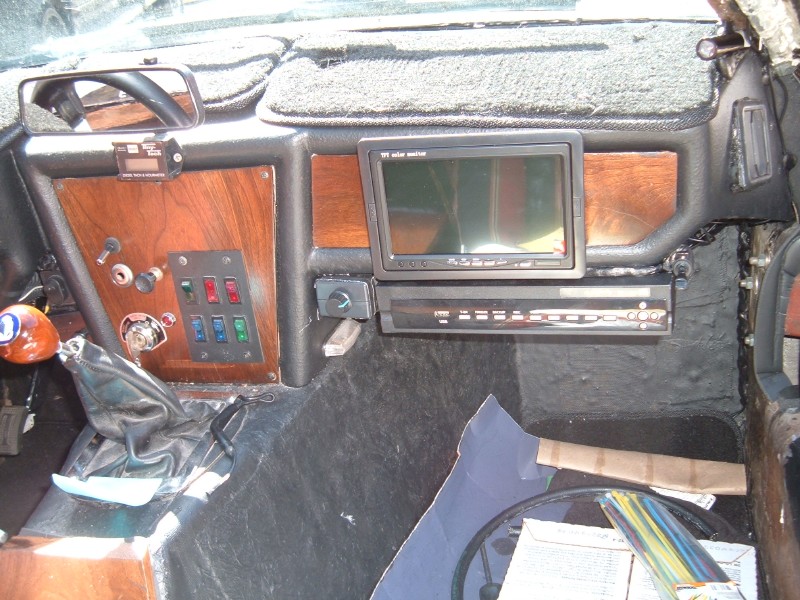
.
.
The alternator used is a stock mid-eighties Delco 10-SI with a 12-SI fan, and is a single wire-to-battery circuit. To disconnect it from the system only required a couple of 60 amp lighting relays wired in parellel between the battery and the alternator.
-
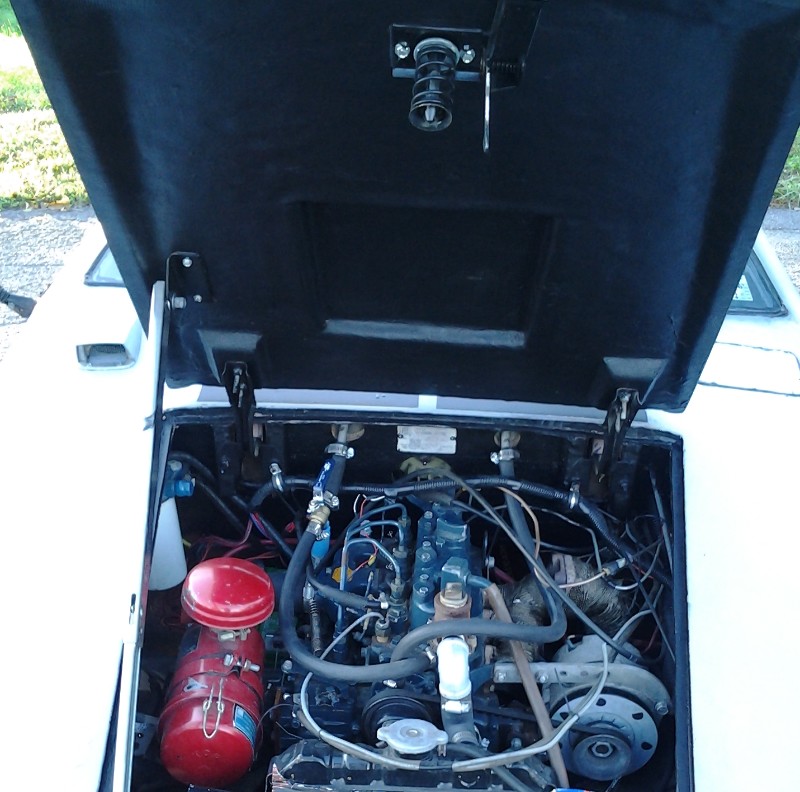
.
.
The smaller 12 volt battery was more than capable of starting the car and running any brake or turn signals since they're all low draw leds.
-

.
.
And the dvr/camera system only uses about 3 amps when on and recording.
-
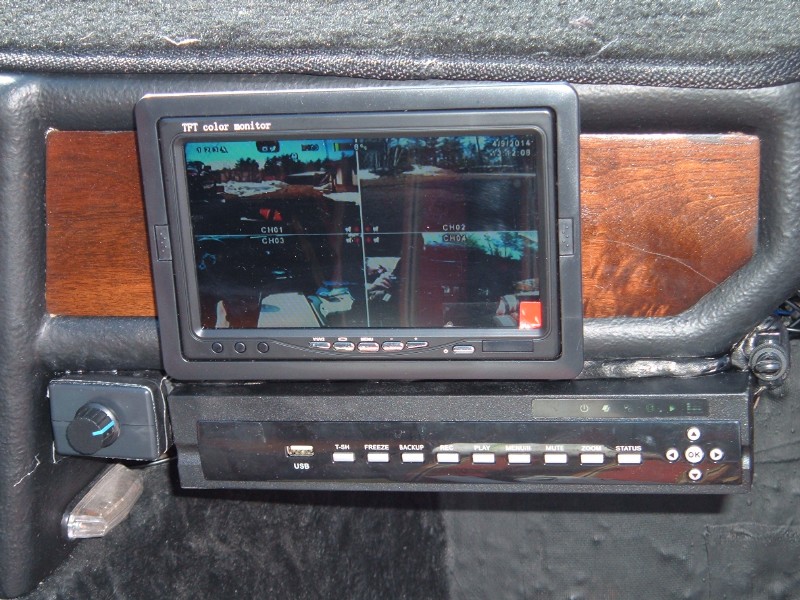
.
.
The bullet cam under the rear wing is pretty small and only requires 200ma @ 12 volts...
-
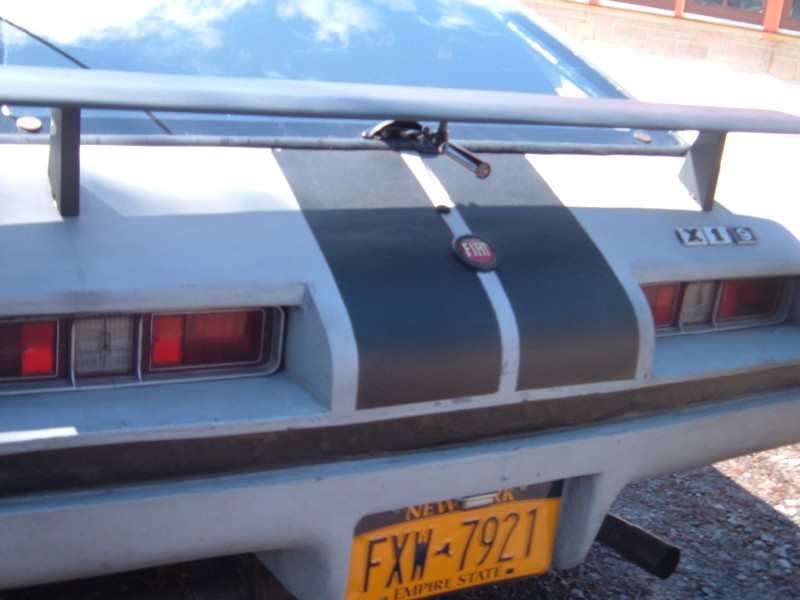
.
.
There's been plenty of discussion on ecomodder and elsewhere about the mpg gains of an alternator cut switch. For the Centurion at the Green Grand Prix this could really add up depending on the circumstances.
-
Consider for a moment that the alternator it's running can max out at 800 watts. Converting over to mechanical, that's about: 1.0728176711 horsepower - or one-seventeenth of Centurion's total engine horsepower. Assuming during stage one, Sheepdog 44 and myself cruised at a fraction of that 17 horsepower....
-
The alternator now becomes an even larger percentage of the overall picture. Opinion: time well spent to do this for the event. I believe Bruce Pick was on the same wave length with his Honda Accord.
-
More to be covered... Much more...
-
~ CrazyJerry
Last edited by changzuki; 08-04-2018 at 11:19 PM..
|
|
|

|
 06-24-2014, 11:59 PM
06-24-2014, 11:59 PM
|
#137 (permalink)
|
|
diesel doer
Join Date: Oct 2013
Location: Gainesville, FL
Posts: 46
Thanks: 29
Thanked 6 Times in 6 Posts
|
CrazyJerry,
Wow, what a great part-by-part system analysis. Are you retired or just don't bother with sleep, anymore? If you don't mind, a couple of questions:
1. With an alternator cutoff switch, the alternator rotor is still engine-driven. Could a switch-driven clutch like the AC compressor clutch reduce the load on the belt even further (and the relays then could be replaced by a diode bank)? Would this be of advantage?
2. Have you seen Lasersaber on Youtube? He has replaced his car battery with 6 supercapacitors and a very small battery. With your minimal draw, you may be able to
get by with an even lighter setup than his, maybe 1/2 lb. If you haven't seen his video, Youtube the words "boost pack".
Looking forward to much more of your analysis.
BobS
|
|
|

|
 06-25-2014, 07:20 AM
06-25-2014, 07:20 AM
|
#138 (permalink)
|
|
Master EcoModder
Join Date: May 2011
Location: Syracuse, NY USA
Posts: 2,935
Thanks: 326
Thanked 1,315 Times in 968 Posts
|
Quote:
Originally Posted by changzuki

it's all about energy used whether expressed in watts, hp, whatever.
|
You are thinking racing, not fuel economy. Generally in real world driving, lighter can be better because you do have to use the brakes occasionally and no one is going to religiously PnG. But with PnG adding mass to a grotesquely over powered vehicle such as most motorcycles will improve FE. Your comparison with human power is forgetting one thing. The brake specific fuel consumption of a combustion engine is terribly inefficient over all but a small spot on the map. The difference between the optimum operating range at 35% efficiency and the average of 15% is huge. Soaking up the energy that is delivered at the optimum range is difficult. Even the meakly powered CBR250R will absolutely average better FE on a real world cross country trip with 250 pounds on the bike instead of 150 if Pulse and Glide is used. Stressing out over reducing total mass in a hypermiler is a big misconception. Performance suffers with added weight, but FE not so much if you don't touch the brakes.
Back to the bikes. A human powered vehicle weighs 5 times more than a road bike but goes 3 times as fast due to the better aerodynamics.
Sorry, rant over. Replacing the lead battery in your pick up truck with lithium in order to improve the fuel economy is a huge waste of money. |
|
|

|
 06-25-2014, 01:46 PM
06-25-2014, 01:46 PM
|
#139 (permalink)
|
|
Hydrogen > EV
Join Date: Apr 2012
Location: NW Ohio, United States
Posts: 2,025
Thanks: 994
Thanked 402 Times in 285 Posts
|
Quote:
Originally Posted by sendler

It makes sense if you think about it. Added mass improves the effectiveness of Engine Off Coasting with Pulse and Glide. And really only hurts fuel economy if you touch the brakes. Which we almost never do in competition. The increased rolling resistance is negligible and if the mass is gained as the result of an aero mod, it will be a big net improvement. I read a lot of comments about expensive techniques to reduce the weight of a vehicle as a means of improving the FE such as changing the lead battery for a lithium. Complete waste of money. FE only cares about the mass of the vehicle when you step on the brakes. Or if you are scrubbing the tires through the bottom of turn one.
|
Losing weight in rotational force is a huge gain uphill, I have found. I was worried about the change from reducing to a lighter drive shaft, but pulse and glide 40-60 (or 85 on hills) from Ohio to North Carolina pre drive shaft netted me 47 and change MPG, while post drive shaft cruise control at 60 from Ohio to GGP netted me slightly better MPG, 47 and change- but a hair more(For ~10 hours it was my new record lol).
Of course, different route, circumstances were very different, and obviously there were countless different variables between the two, but cruising at my usual max speed and only EOC if I would be engine braking performed exceptionally well with the difference, while almost constant P&G without didn't do as well. |
|
|

|
 06-25-2014, 08:18 PM
06-25-2014, 08:18 PM
|
#140 (permalink)
|
|
Changfa diesel + Suzuki
Join Date: Jul 2012
Location: Northern, NY
Posts: 527
Centurion - '74 FIAT X1/9 Centurion Full Race DNA Last 3: 143.5 mpg (US)
Thanks: 160
Thanked 463 Times in 235 Posts
|
Quote:
Originally Posted by BobS

CrazyJerry,
Wow, what a great part-by-part system analysis. Are you retired or just don't bother with sleep, anymore? If you don't mind, a couple of questions:
1. With an alternator cutoff switch, the alternator rotor is still engine-driven. Could a switch-driven clutch like the AC compressor clutch reduce the load on the belt even further (and the relays then could be replaced by a diode bank)? Would this be of advantage?
2. Have you seen Lasersaber on Youtube? He has replaced his car battery with 6 supercapacitors and a very small battery. With your minimal draw, you may be able to
get by with an even lighter setup than his, maybe 1/2 lb. If you haven't seen his video, Youtube the words "boost pack".
Looking forward to much more of your analysis.
BobS
|
Hi BobS - and thanks for your kind words... I don't sleep much anymore and quite a ways from retirement - which I don't believe will exist as we know it today, so this entire 12 year off-grid experiment is a challenge to constantly do more with less on all fronts. Knowledge is worth its weight in gold and so is the ability to think things through and take necessary risks to make x,y, or z work. I get lucky once in awhile and the inspiration from folks on ecomodder and other forums is fuel for me - we need more of this!...
-
>>1. With an alternator cutoff switch, the alternator rotor is still engine-driven. Could a switch-driven clutch like the AC compressor clutch reduce the load on the belt even further (and the relays then could be replaced by a diode bank)? Would this be of advantage?
-
---Excellent question! Let's take a look at this "piecemeal".
An AC compressor clutch (or variation of) would effectively disengage the spinning of the Alternator's rotor, but at the end of the day is there a gain or a loss? I don't know the actual energy difference between what it takes to spin just the unengaged AC clutch pulley at speed vs the no load spinning of the normal alternator setup at speed but there is likely a advantage going to the AC clutch setup as you've suggested in your question..
-
RPMs being equal between the two (and I do realize there is typically a pulley diameter difference here), the alternator normally has a cooling fan which should consume some extra energy to spin it, the AC compressor lacks this so sticking with a no-load spinning only situation, the advantage should go to the compressor clutch setup.
-
At some point though, one may want to use the alternator and here is where it may get interesting... In addition to the alternator draw (in creating field and output currents along with its normal spinning friction), we can add on the amps (current) draw of the magnetic compressor clutch... Depending on the clutch and figures used this can normally be 3-4 amps dc (possibly as high as 7amps on a 12 volt system – Nippendenso or the like brand). This translates to somewhere in the vicinity of 36-48 watts just to power that magnetic clutch - this is not a lot of juice as long as the clutch assembly is sound. If the magnetic clutch's is worn and the air gap becomes larger it will take more juice to engage it – and this can easily jump to a couple of hundred watts and blow a fuse. In this case a couple of hundred watts is roughly one-fourth the output of the 800 watt alternator used in the Centurion.. To give it a little perspective, the roughly 200 watts it would take just to power a sloppy air gap magnetic clutch, is more energy than the head/clearance/brake/dash lights, wiper motor and onboard four camera Centurion use...
-
As far as an AC magnetic clutch itself is concerned: A typical car’s air conditioning compressor will need approx 4-5 hp to run at full load so its magnetic clutch assembly should be stout enough to handle the common alternator full load rating of just over one horsepower.
-
So back to the question... If the electrical demands are not requested (say for the mid-morning Green Grand Prix Stage I fuel economy portion), then your suggestion of the magnetic clutch disconnect likely has some clout here. This portion of the event is 100+ miles so there could be some decent savings here of this type of alternator disengage.
-
If on the other hand, the electrical demands are requested - Green Grand Prix at night in the rain, then we could add the additional energy needed by the magnetic clutch to the regular electrical demand and there would be an energy penalty above and beyond the normal alternator output. I do believe the roughly 36-48 watts may not seem like a lot, but on most cars you can hear an alternator whine a bit, or a pitch in rpms, when simply turning on a smaller load like a couple of 55 watt halogen headlights. On a smaller engine like Centurion's limited displacement 850cc engine, it's much easier to experience this extra load.
-
With a lead acid battery: Would the 36-48 watts used to engage the magnetic clutch be more useful and use contribute to a higher mpg, if used instead, with the regular alternator setup to float charge the battery at roughly 13.4 volts - which uses less energy (amps) - than keeping the battery in its bulk charge voltage of 14.1 volts or so and at the same time possibly extend its lifespan? More food for thought.
-
So, depending on the situation, this modification (or variation of it) has potential to reap some benefits especially over the car’s lifetime and just may be worth the effort to do.
-
As an additional note: this modification would do away with the disconnect relays I had installed. When the magnetic clutch disengages the alternator it effectively stops it as though the car is shut-off, so the disconnect relays would not be necessary. In the same way, the diode bank that is suggested in the original question would also not be needed. The alternator by default has those built-in so the additional diode bank would not be necessary.
-
Using a brushless permanent magnet alternator is an entirely different story, and, in this on-or-off charging scenario could be more efficient compared to the standard alternator which wastes a lot of energy just to create a magnetic field…Typical pole claw alternator is 50% efficient and CEN advertises about 70% efficiency on their alternators. PMA's typically are in the 90% efficiency range but are much more challenging to control for battery charging - but a carefully watched volt/amp meter should tell you when to disengage via a magnetic clutch ..)
-
To incorporate a setup like this in Centurion would require a bit of creativity since free space within the engine bay is at a premium.
-
Swapping spaces with the air filter may provide a solution though since the existing alternator space is pretty busy with the exhaust manifold, oil filter access, and steering box.
-
I may have overlooked something but I'd love to hear others' thoughts on this, again I really like this question as it challenges any external load management (power steering pump, alternator, etc..) and opens up the door to think of other ways to accomplish the engagement of these loads, if, and when they are necessary... Additional discussion might also include battery longevity based on the chemistry when used in an on off system like this.
-
>>>2. Have you seen Lasersaber on Youtube? He has replaced his car battery with 6 supercapacitors and a very small battery. With your minimal draw, you may be able to get by with an even lighter setup than his, maybe 1/2 lb. If you haven't seen his video, Youtube the words "boost pack".
-
---Yes!!! Leaving myself open to criticism here, I am in the camp that supercapacitors have great potential for future electrical storage. As you mention, there is a weight savings here. If handled correctly they are safe and have the ability to last a long, long, time.. A couple of issues (that are becoming less over time) are: The management of higher voltages of the supercapacitors to be usable in say a standard 12 volt automotive application. For example, the ability to have a decent amount of usable electricity from them over a longer period of time - not just a short burst - say for a starter motor. Similar to lithium, multiple cells/capacitors need to be watched for balancing issues. The example you have given would actually be a pretty good setup as a booster pack for a small battery in something like Centurion since its power requirements are very, very low. I have not made it that far yet, but have had some excellent results with a small lithium battery.. My experiments with small lithium is from a desire to have a common battery storage platform for the house, Aurora trike, electric mower, Centurion, etc... Maybe when the lithium market fades, supercapacitors will be the answer. We'll see!
-
~CrazyJerry
Last edited by changzuki; 08-04-2018 at 11:20 PM..
|
|
|

|
|
The Following User Says Thank You to changzuki For This Useful Post:
|
|
|